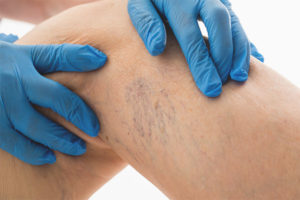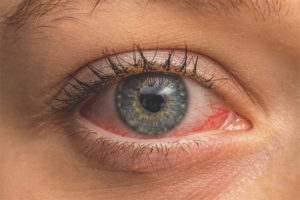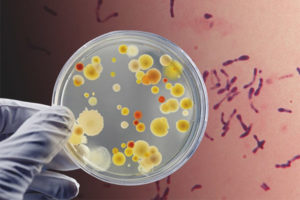The content of the article
Bleeding from the nose or epistaxis is a fairly common problem. Almost every person at least once in his life could observe the flow of blood from the nasal cavity. Sometimes the bleeding is very small and stops itself after a minute or two. However, massive blood loss in this way is also possible. Unfortunately, not everyone knows how to provide first aid in this situation. Everyone should be able to properly stop nosebleeds.
Types of nosebleeds
The nasal cavity is conditionally divided into two parts: front and back. The anterior is the nasal passages, which are surrounded by the cartilaginous part of the nose. Simply put, this is what we can see with the naked eye. The back is closer to the hoans, special tools are needed to study it.
Bleeding is also divided into two types:
Front It arises, as a rule, from the capillaries of the submucosal layer. Such blood is light, not a lot of it follows. Bleeding does not last long, may stop on its own.
The back. This option is much more dangerous, but it is also less common. The fact is that there are venous plexuses in the back of the nose. They help warm the air coming from the environment, but bleeding from them can be very massive. The veins are protected by the bones of the skull and are rarely injured. Venous blood can be recognized by its dark cherry color.
Causes of Epistaxis
There are many situations, diseases, and pathological conditions that can cause blood to flow from the nose. Suddenly occurring or frequently recurring bleeding is of particular diagnostic value. It is worth paying special attention to. Most often, epistaxis occurs due to the following reasons:
- Injury. The bones and cartilage of the nose are very thin anatomical structures. They are easily injured due to shock. Due to abundant blood supply, displacement of the nasal bones almost always leads to bleeding. Moreover, it can be blood from both the front and the back of the nose.
- Foreign body. Getting into the nasal cavity of any foreign objects injures his mucous membrane. It can be a pen accidentally caught in the nose by those who have the habit of gnawing it and often do it automatically, overshot by the mouth. For the same reason, a finger cannot be inserted into the nasal cavity. To eliminate itching in the nose in this way is not only unethical, but also dangerous. This is a fairly common cause of bleeding.
- Inflammatory process. It can cause any infection acting on the upper respiratory tract or inhalation of aggressive chemicals. During rhinitis, the nasal mucosa swells, its vessels are full of blood. Because of this, any even minimal effect on the mucosa can lead to bleeding. Sometimes epistaxis during inflammation begins for no apparent reason.
- Arterial hypertension. An increase in pressure inside the vessels contributes to their rupture and the release of blood from them. Nose capillaries are very thin, therefore, people with arterial hypertension often experience nosebleeds. This condition is dangerous because during a hypertensive crisis, in addition to the capillaries of the nose, brain vessels can be damaged, which leads to strokes or transient circulatory disorders.
- Reception of antiplatelet agents. They are also known as non-steroidal anti-inflammatory drugs. The most common of these is aspirin. In addition to reducing the inflammatory process, lowering the temperature and relieving pain, it is able to reduce the aggregation ability of platelets.This means that any bleeding becomes massive due to the fact that blood cannot clot. In this case, even slight damage to the vessels of the nose is accompanied by epistaxis.
- Blood diseases. Massive bleeding can cause two groups of diseases: hemophilia and leukemia. At the first, some factors of the blood coagulation system are absent, which is why bleeding cannot stop on its own. In the second, blast cells displace platelets, which causes bleeding to develop.
- Systemic vasculitis. This is a whole group of diseases that affect blood vessels throughout the body. Some of them cause the formation of granulomas, some destroy the walls of the capillaries or increase their permeability. Each of these diseases can cause bleeding.
- Hypovitaminosis. A lack of vitamin C leads to an increase in the permeability of the vascular wall and the release of blood from the bloodstream. A deficiency of vitamin K negatively affects the blood coagulation system; independent hemostasis is impossible without it.
- Alcohol intake. Alcohol-containing drinks, getting into the bloodstream, are initially spasmodic, and then the vessels dilate excessively, which can lead to epistaxis.
- Inhalation of dry air. Inadequately humidified air injures the mucous membrane like a foreign body. Drying of the tissues of the nasal cavity can lead to cracking and bleeding.
- Sprays for the nose. Such drugs are an excellent remedy for runny nose and nasal congestion, but many of them aggressively affect the nasal mucosa. If long-term use of sprays is necessary, then it is better to choose those that contain sea water. This component promotes the regeneration of the mucous membrane.
- Deformation of the nasal cavity. It can be congenital. Improper development of any cartilage of the nose or curvature of the nasal septum are factors predisposing to bleeding. In addition, diseases such as syphilis and Wegener's granulomatosis - contribute to the formation of deforming granulomas in the nose, and then their decay and bleeding.
- Tumors A neoplasm of the nasal cavity can sprout blood vessels and cause epistaxis. In addition, the tumor itself has good blood supply and can also be a source of bleeding.
Emergency care for epistaxis
There is a clear algorithm of actions to save the life and health of the victim. If nosebleeds are detected, it is necessary:
- Let the victim sit in a comfortable position for him; the body should be tilted forward. Throwing back the head is a common mistake.
- Press the wings of the nose with your fingers from the outside to the inside. This stage can be performed only if there is no fracture of the nasal bones.
- Continue pressing for up to 3 minutes, if bleeding resumes, proceed to the next step.
- Take cotton-gauze swabs, moisten them in a solution of hydrogen peroxide and inject them into both nostrils until they feel resistance. Do not take out tampons until the ambulance arrives. If a nasal bone fracture is detected, which indicates their displacement, points 2 and 3 should be neglected.
- In order to find out whether bleeding has stopped after tamponade, it is necessary to see if blood flows down the back wall of the pharynx. In this case, the victim may feel her taste in the mouth.
If bleeding does not stop with the proposed methods or resumes quickly, you must take the victim to the hospital. In a hospital setting, the patient may undergo a posterior tamponade of the nasal cavity or an operation with doping of bleeding vessels.
What to do with frequent nosebleeds
If this symptom occurs frequently, the first thing to do is find the cause of the bleeding. To do this, you need to see a doctor and undergo a series of studies on the most likely diseases.In addition, you must stop taking the usual drugs, especially aspirin.
At home, you can control the change in blood pressure during bleeding. If the appearance of blood is accompanied by its rise, most likely the reason is precisely in arterial hypertension. Then it should be treated.
Vitamin C intake often helps to cope with recurrent bleeding. With its hypovitaminosis, in addition to the nose, gums can bleed. So, a course of treatment with vitamin C will not be superfluous with any bleeding.
Thus, we can conclude that epistaxis is a manifestation of many pathological conditions. First, you need to give the patient first aid and stop the blood, and after that - look for the cause of this condition. There is a clear algorithm of actions that everyone should know. Following this scheme will save the life and health of the victim.
Video: how to stop nosebleeds











Submit